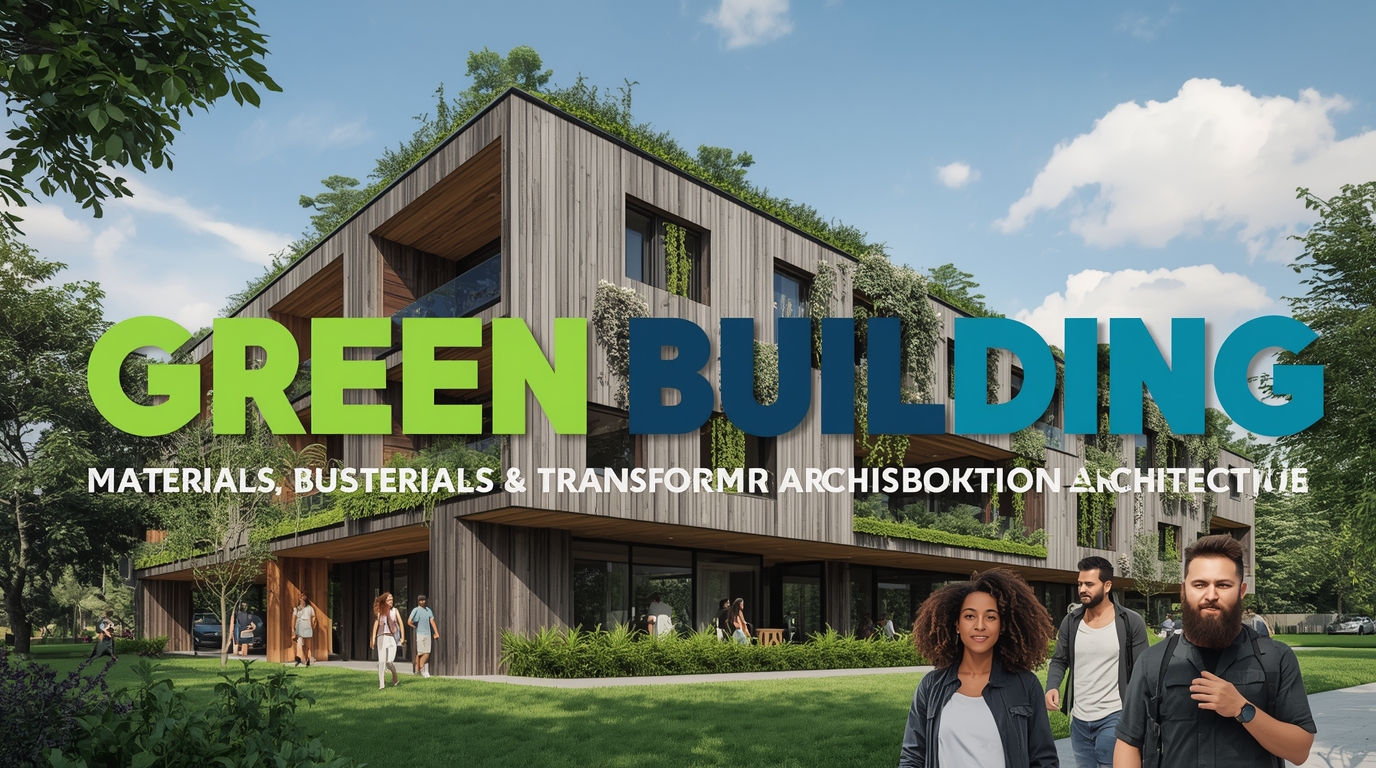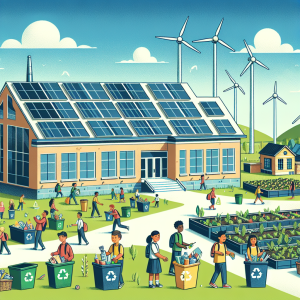Green Building Materials Transforming Architecture
Green building materials are revolutionizing the world of architecture by providing sustainable alternatives that contribute to environmental conservation. These materials reduce the carbon footprint of buildings, enhance energy efficiency, and feature more sustainable sourcing methods, reshaping the architectural landscape.
The green architectural movement is primarily driven by the urgent need to combat climate change and reduce resource consumption. The building sector accounts for a significant portion of global energy use and carbon dioxide emissions. Thus, integrating eco-friendly materials in construction projects is pivotal for achieving sustainable development goals. Professionals in the field recognize the necessity of adopting green materials to meet client demands for environmentally responsible structures while maintaining functionality and aesthetic appeal.
One groundbreaking material making waves in the architectural domain is cross-laminated timber (CLT). This prefabricated wood panel product has unique benefits that promote sustainability. CLT is made from several layers of timber, glued at opposing angles. This structure provides high strength, stability, and fire resistance, making it a substantial alternative to steel and concrete. Furthermore, timber is a renewable resource that captures carbon dioxide, thereby mitigating climate change. This makes CLT an attractive option for architects aiming for sustainable solutions.
Another material changing the architectural landscape is recycled steel. Steel is known for its durability, strength, and recyclability. By using recycled rather than newly-produced steel, architects can significantly reduce energy use and emissions associated with its production. Structures built with recycled steel benefit from reduced overall costs due to savings in energy consumption and raw materials. Its application ranges from framing, roofing, and structural supports, emphasizing versatility across various architectural designs.
Bamboo, traditionally seen as a basic material, has emerged as an elegant and sustainable option in modern architecture. Its rapid growth rate, with some species growing over a meter per day, positions bamboo as a highly renewable material. Additionally, bamboo offers impressive tensile strength, allowing it to be employed in construction without sacrificing durability or aesthetic value. Its versatility is apparent in applications ranging from flooring and paneling to more structural uses, demonstrating bamboo’s potential to transform traditional construction methods.
Another innovative material, reclaimed wood, has gained popularity for its aesthetic charm and sustainability credentials. Sourced from older buildings, barns, and other structures, reclaimed wood offers a unique visual appeal with its weathered textures and histories embedded within the material. Its use prevents deforestation and reduces waste, making it a valuable component in eco-friendly architecture. Reclaimed wood is often used in flooring, beams, and furniture, all contributing to a reduced environmental impact.
Straw bales have found an innovative niche in eco-friendly construction, offering excellent insulation properties. Straw bales are a renewable resource, and their use minimizes agricultural waste. Builders and architects appreciate straw bales for their affordability and ability to create energy-efficient buildings that significantly lower heating and cooling costs. Structures employing straw bales are notably durable, offering a rustic charm that complements sustainable design principles.
Eco-friendly insulation materials, such as sheep’s wool and recycled cotton, are also critical in sustainable architecture. Traditional insulation materials often involve energy-intensive manufacturing and contain harmful chemicals. In contrast, sheep’s wool and recycled cotton are natural, non-toxic, and biodegradable, providing effective thermal and acoustic insulation with minimal environmental impact. This shift enhances the overall sustainability of buildings while maintaining optimum comfort levels.
Rammed earth, an ancient building technique, is seeing a resurgence due to its sustainability and architectural beauty. Earth is compacted to form walls that are not only aesthetically compelling but also possess excellent thermal mass, providing natural temperature regulation. This material minimizes the need for air conditioning, thereby reducing energy consumption. Its use requires low processing energy and reduces waste, aligning well with sustainable construction goals.
Living roofs and walls, incorporating soil and vegetation, are another advancement in green architecture. These installations offer natural insulation, reduce urban heat island effects, and improve air quality by absorbing pollutants. Green roofs and walls also enhance biodiversity, providing habitats for various species in urban areas. Their aesthetic value cannot be understated, as they transform buildings into living ecosystems, merging urbanization with nature.
Solar panels, while not a building material per se, are increasingly integrated into modern architecture to enhance sustainability. Photovoltaic cells harness sunlight to generate electricity, significantly reducing reliance on non-renewable energy sources. Innovations in solar technology now allow them to be incorporated into building materials, such as shingles and facades, seamlessly blending into architectural designs. This integration supports energy self-sufficiency and minimizes environmental impact.
Mycelium, the root network of fungi, offers an exciting potential as a sustainable material. It grows in a matter of days, is completely biodegradable, and requires little energy to produce. Mycelium can be molded into various shapes, serving as insulation, bricks, or even furniture components. Its lightweight nature and fire-resistant properties further enhance its appeal in sustainable architecture, driving innovation in material science and application.
Hempcrete, a mixture of hemp fibers and lime, is gaining traction for its sustainable properties. Known for its durability, excellent insulation capacity, and breathability, hempcrete contributes to healthier indoor air quality. The material is carbon-negative, as hemp absorbs more CO2 during growth than is emitted during its production. This makes hempcrete a highly sustainable choice, with applications spanning walls, insulation, and structural elements.
The architectural industry’s shift towards green materials indicates a broader commitment to sustainable development. These materials not only provide environmental benefits but also offer builders and designers innovative ways to solve contemporary challenges. As consumer awareness grows and regulatory frameworks tighten, the prevalence of green building materials is expected to rise, leading to more sustainable and resilient built environments globally. Through creativity and innovation, architects are redefining spaces in a way that harmonizes with nature, paving the way for a sustainable future.




